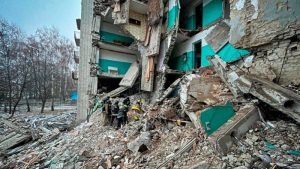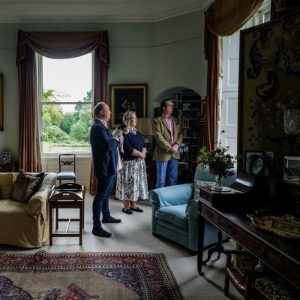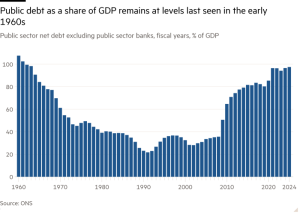the rise of ‘wellness real estate’
Picture yourself walking round one of the 66 residences at The Well, a development under construction on Miami’s Bay Harbor Islands. You can keep lettuces to hand via the supplied hydroponic herb garden (pop in a new pellet for a fresh harvest) and use them with meals prepared with the sous-vide cookers, air fryer and Nutribullet found in the pantry. The kitchen’s drinking water tap dispenses still or sparkling, room temperature or chilled. Shower heads offer lymphatic drainage, and there are infrared panels for an at-home sauna. Or, take a moment in the meditation nook before starting the day. Then there’s the 13,000 sq ft wellness facility at ground level where you can find IV Vitamin Therapy, acupuncture, vibrational energy healing, yoga classes and more.
“We’re going to survey everyone before they move in, and then six months later again,” says The Well’s chief creative officer and co-founder Kane Sarhan. “We think that will prove that we can make you healthier by living at The Well.”
It’s a bold boast. And since the first residents won’t arrive until mid-2025, one that’s untested. But the New York City-based company’s expansion from a spa and gym to this immersive, 24/7 residential experience is reflective of a wider trend. So-called wellness real estate is a growing market: the Global Wellness Institute says that such development grew globally from $225bn in 2019 to $438bn last year. It estimates that the sector could be worth $913bn by the end of 2028.

There are many ways of capitalising on the trend. At the newly redeveloped Chelsea Barracks in London, for example, the fitness facilities are supersized, and include a subterranean tennis court with interactive markings and viewing gallery. Motivational speaker Tony Robbins has teamed up with hotelier Sam Nazarian and events producer Richard Attias for The Estate, which plans to operate 15 hotels and residences by 2030 around the world, rooted in preventive medicine and longevity. Earlier this year, Silvestre Nosara opened in Costa Rica, with its nine beachside condos touted as the chance to move to one of the world’s life-lengthening “Blue Zones” — those areas of the world where people live the longest. And Florida-based developer Related says that the footprint dedicated to wellness facilities in its buildings has grown between 20 and 30 per cent since 2019.
There are more projects afoot for The Well, Sarhan says: two in the US, one in Mexico and another in Europe. They’ll follow in the footsteps of SHA, the Spanish clinic, and Six Senses, the InterContinental Hotels Group-owned chain. Singapore-based Neil Jacobs runs the latter, which has almost two dozen wellness property developments either open or in the pipeline worldwide. Jacobs says that approaches from development partners have accelerated in the pandemic’s wake.
“It’s up maybe 35 per cent,” he says of the new deals, “because the demand for wellness-driven real estate is so much greater,” he says. “The perception is that maybe this is no longer so woo-woo.” He expects almost three-quarters of the company’s new openings will combine both hotel and real estate offerings, alongside a real estate-only concept in Dubai.

SHA, a subsidiary of developer AB Living, in Alicante, Spain, opened its first outpost in 2008. Frequent guests at the wellness clinic began asking if they could buy a villa or suite, says Alejandro Bataller, vice-president of AB Living. Space constraints meant the company could only squeeze in a dozen or so residences, but it has made residences a core component of its new site in Mexico, with 37 homes. “We sent out a communication to our database and sold all of them in one month,” Bataller says. Residents will have access to the spa-clinic as well as their own facilities, including fitness room, padel and tennis courts and a private beach.
The next SHA project is more ambitious: a 25-hectare island on Al Jurf, Abu Dhabi. It will contain 86 villas, 49 apartments and two villas. Sales for these opened in June. Residents have access to several pavilions dedicated to different elements of wellness. There will be a nutrition hub with an organic market, a sports pavilion, and mind and body centre. “We want to make sure people living there have a genuine interest in healthy living,” says Bataller. Prospective buyers “have to fill out an application, and then be accepted”.

The rationale for such efforts isn’t simply to make the world a healthier, happier place: wellness real estate often commands a premium. The Well is pitching its pricing 30-40 per cent more than the local competition’s $1,500 per sq ft. Lake Nona, a planned community in central Florida from Tavistock Development, has an average price per sq ft 25-30 per cent higher than similar homes nearby, according to president Craig Collin.
Lake Nona’s amenities include a 130,000 sq ft sports facility with a rock-climbing gym, four pools, basketball, volleyball, badminton and pickleball courts — and PrecisionRX, a “metabolic health and human performance lab”. It’s also experimenting with what the company has dubbed WHIT (or the Wellness Home built on Innovation and Technology), a model home for companies to trial gadgets and systems, from smart appliances to 3D printers that can create personalised doses of medication.
Just as such residences may be striving for high premiums at sale, they’re also pricey to operate: service charges for a home with complex, heavily staffed amenities can be onerous. (The Well’s apartments start at 1000 sq ft, with monthly service charges at $2 per sq ft.) Sarhan counters that the charges will be on par with similar developments nearby, partly because the membership club at ground level will help spread costs beyond the residents alone.


There are other potential issues with such projects, says Cindy Palusamy of consultancy CP Strategy. She has worked in the wellness industry for more than two decades, and says she receives many offers to work on residences. “None have been interesting enough to get me to sign on yet, as most developers follow the simple trends,” she says. “If you’re going to take two storeys of a high rise and make it this quote, unquote wellness centre, how are you actually going to staff it with true experts? If you have the money and the best doctor is 10 miles away, you’re going to go to that doctor, so you’ll ask. ‘Why am I paying for that [on-site wellness centre]?’ The idea that convenience in this space trumps all doesn’t hold for me.”
It’s crucial, too, that there’s an emphasis on enjoyment, rather than deprivation — eating puréed food and practising yoga for 12 hours a day might be appealing if it’s for a weekend at a clinic, but living like that full-time will appeal to few, Palusamy warns. Much like a New Year’s resolution is often abandoned within weeks, will wealthy, time-poor folks truly engage with those on-site facilities?
“Just look at what happened to Peloton,” says Rina Raphael, referring to the exercise bike company popular during the pandemic, whose sales fell significantly once gyms reopened. Raphael writes Well To Do, a newsletter about the wellness industry. “[Wellness residences are] just a small market, and sometimes I think these companies are acting as if they have mass appeal — and I don’t think they have.” Even for the ultra-wealthy, she adds, the appeal is limited.

Perhaps, then, the better expression of wellness at home is more small-scale, as Mimi Shin has found. The Venice Beach, California-based interior designer says she’s asked to add a wellness space to every high-end home she overhauls. “We’re the land of meditation, green juice and wellness,” she laughs, citing one Hollywood couple who employed her to work on their Marmol Radziner-designed house. “They have so many outdoor decks, so we decided to make one a meditation space.” The appeal of saunas and steam rooms is distinctly analogue. “It’s really hard to use your phone in a sauna so maybe that’s why you actually unplug and unwind,” she says, comparing it with sitting poolside, phone in hand.
Indeed, pools, especially oversized ones, are falling out of favour among her client base. “The size is getting smaller and smaller. And many people now don’t turn on their heaters, and use the pool as a cold plunge.” Wellness real estate, then, can be as simple as turning off a few switches.
Find out about our latest stories first — follow @ft_houseandhome on Instagram
#rise #wellness #real #estate







